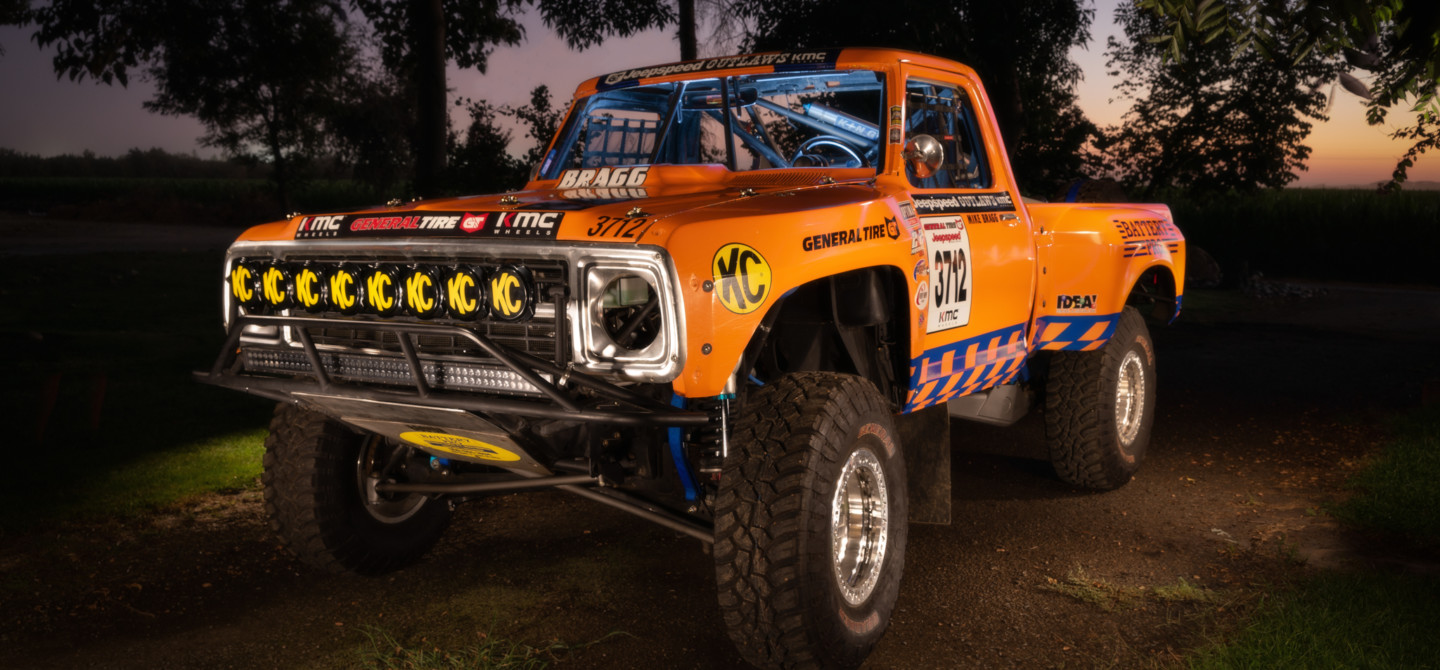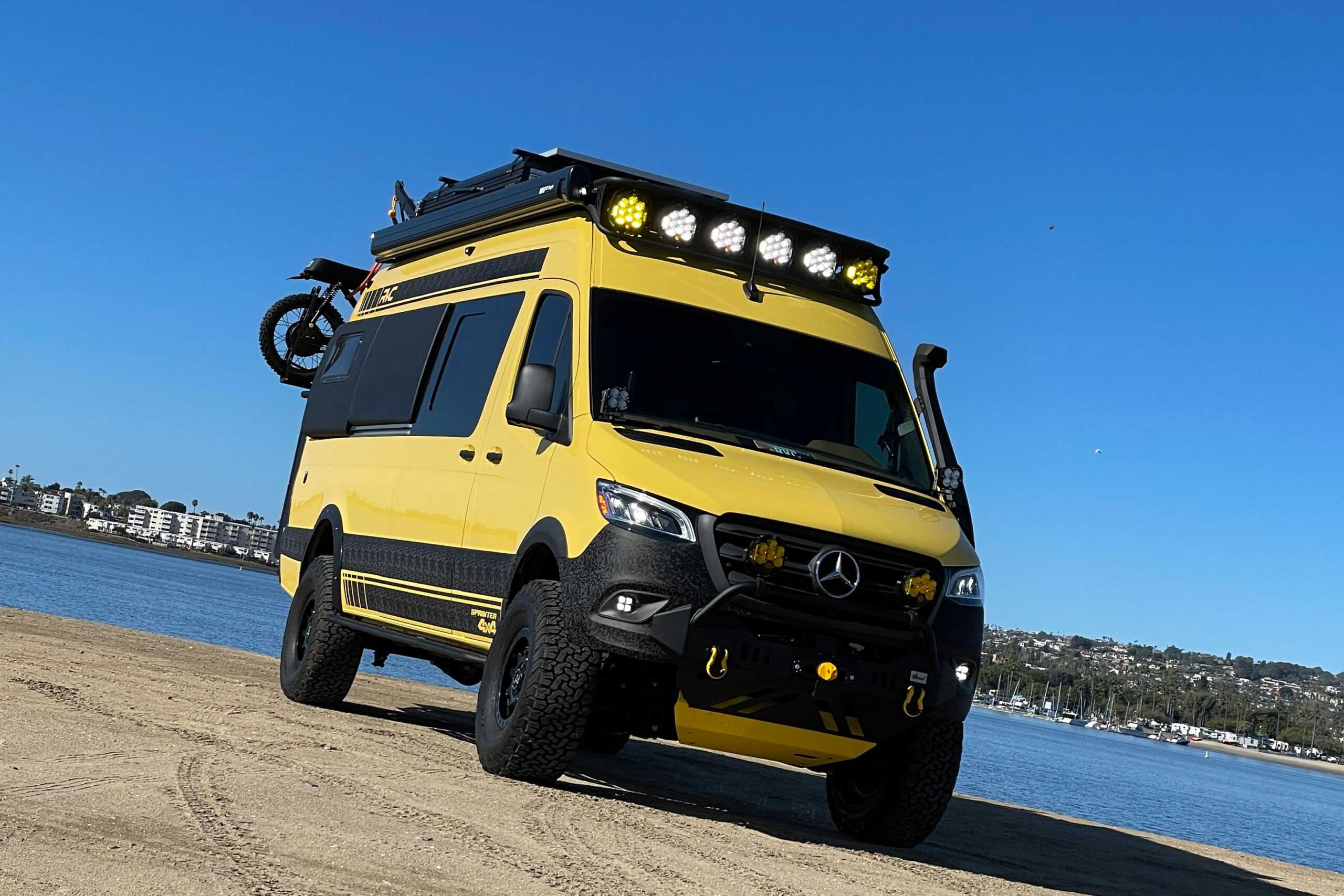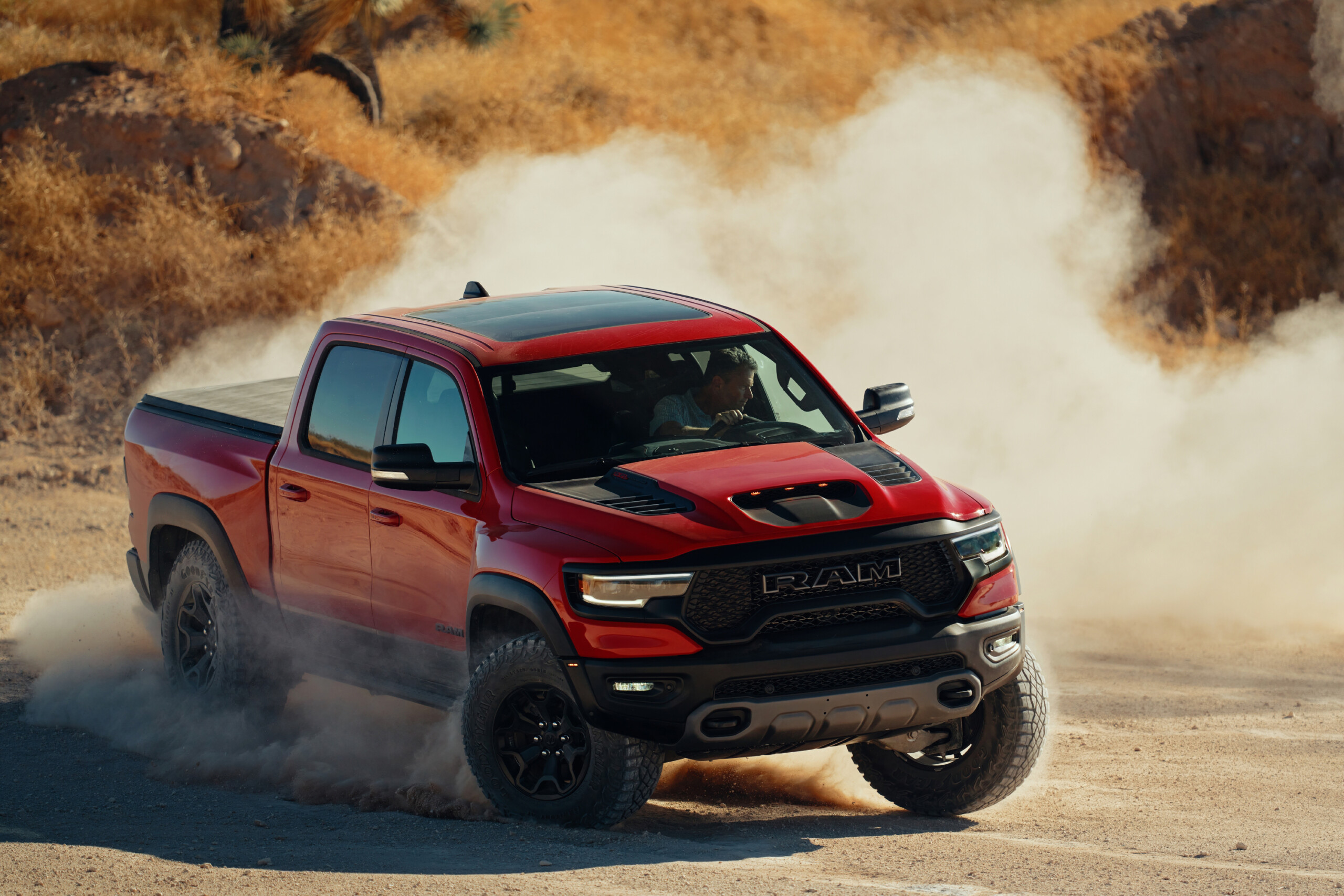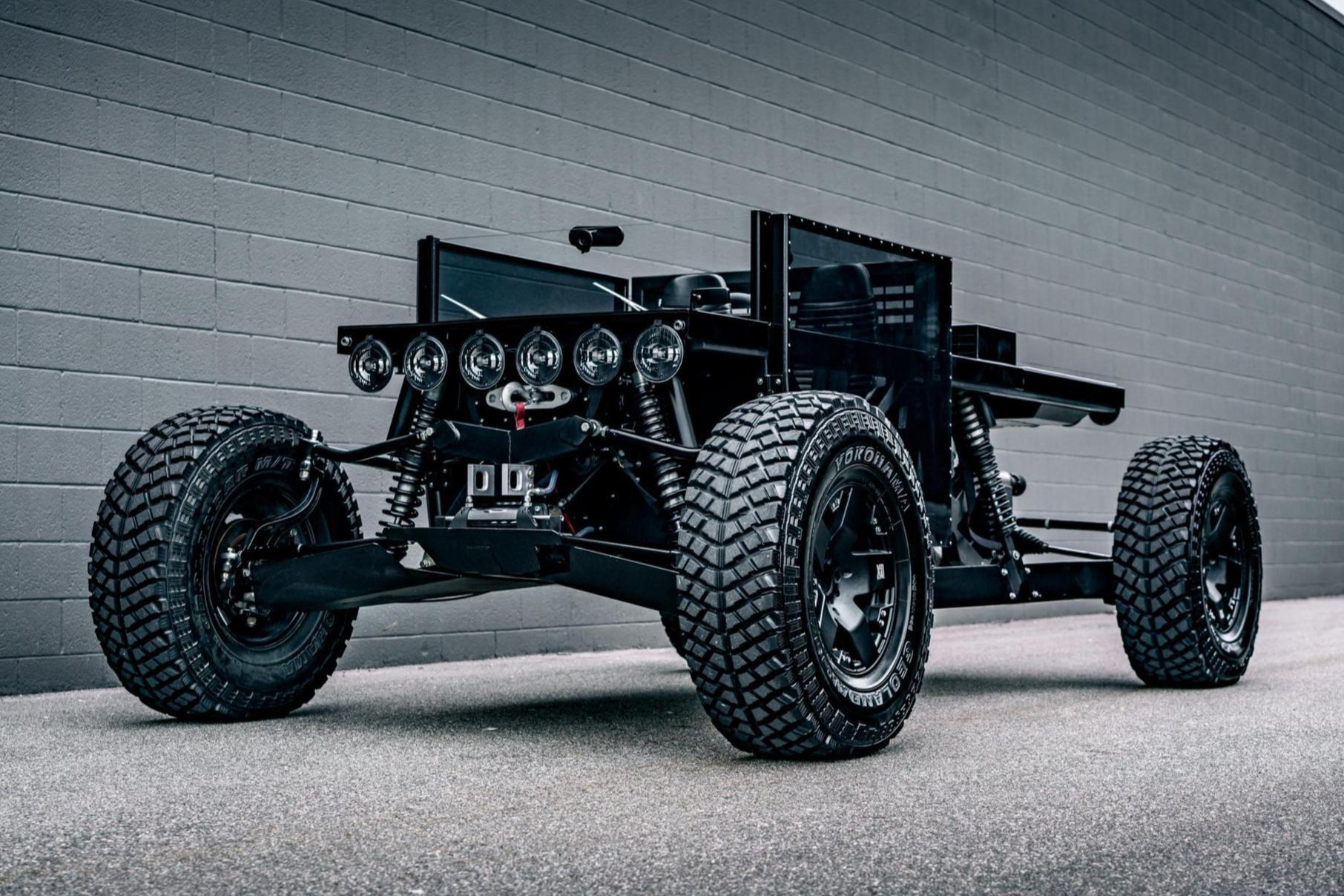Introduction To A Legacy
Class 3 and Class 8 vehicles were my poison when I started following desert racing. Around the turn of the century, I moved to the Central Valley of California. One of the benefits of this move was my introduction to the Bragg family and their awesome Class 8 truck. We should always learn about history, respect it and pass it on to those that come after us. With that in mind, I would not be doing justice to this feature without covering some of the Bragg family history in off-road racing. Off-road and family are like peas in a pod. It takes a lot of help to field a car, truck, UTV, or whatever. That is why a lot of teams are family teams and the Braggs are no different. Patriarch JM was the first to jump into the fray of desert racing. Starting off in 1970, JM began piloting Jeeps and was an important figure in the sport’s heyday. Desert racing at the time saw Hollywood stars driving vehicles. Wide World of Sports brought the acion to the living rooms of us living in the Midwest. At the time, AMC owned Jeep and put a lot of money into desert racing.
Just like other career fields, motorsports have a habit of forming family legacies. Although JM has not competed in years, his two sons, Greg and Mike, have continued to carry the family name. Greg, an accomplished sprint car driver, has been a staple in the world of Trophy Lite competition.
Patriarch JM was the first to jump into the fray of desert racing. Starting off in 1970, JM began piloting Jeeps and was an important figure in the sport’s heyday. Desert racing at the time saw Hollywood stars driving vehicles. Wide World of Sports brought the acion to the living rooms of us living in the Midwest. At the time, AMC owned Jeep and put a lot of money into desert racing.
Just like other career fields, motorsports have a habit of forming family legacies. Although JM has not competed in years, his two sons, Greg and Mike, have continued to carry the family name. Greg, an accomplished sprint car driver, has been a staple in the world of Trophy Lite competition.
The Torch Passes To Mike
Mike is the one who drives this race awesome race truck nowadays. Mike was 14 when he started his off-road career. Throughout the years, he has piloted dirt bikes in District 37 competition. Mike has also worked with Dave Smith and Dave Ashley of Team Enduro. Along the way, Mike started driving this awesome truck in La Rana races and various other competitions in the desert, usually running Class 8. A few years ago, Mike purchased a Class 1700 Jeepspeed vehicle and drove that for awhile. Off-road legend Clive Skilton, along with his son Darren, founded the Jeepspeed series in 2001. The series is a production-based series, based on Jeep chassis and started as one class. In 2019, the race series has continued its partnership with BITD and is a five-race series. The 2019 season has one race left, The Laughlin Desert Challenge October 10th-13th. Now you may be asking yourself, how on earth is a full-size Dodge pickup racing in a Jeep-related series? This truck’s story is pretty good. Before I deep dive the history of it, though, it’s important to understand the Jeepspeed class culture.
A Full-Sized Dodge In Jeepspeed… How?
As of right now, Jeepspeed has four classes that racers can compete in – 1700, 2700, 4700, and Outlaws. The 1700 Challenge Class is for stock vehicles. Wheel travel is limited to 10 inches front, 12 inches in the rear, and a max tire size of 33 inches. The 2700 Cup Class is for Jeep and Chrysler vehicles that maintain stock appearance and profile. Tire size is limited to 35 inches and wheel travel is maximum 12 inches front, 14 inches rear. The Jeepspeed 4700 Class is an open class designed to allow tube and custom frame Jeeps to compete. The 4700 Class is limited to 15 inches upfront, while rear-wheel travel is open. There is also the Jeepspeed Trophy 4700 Class, which is an open class designed to allow tube and custom-frame Jeeps to compete under the Jeepspeed banner. Front-wheel travel is limited to 15 inches while rear wheel travel is open. Class 3700, the Jeepspeed Outlaws class, is where this orange beast competes. The Outlaws class is designed for Jeep and Dodge-based sport utility vehicles and light pickups. They’re recognizable as such due to the grille, hood, and fenders. Front-wheel travel is limited to 15 inches and the rear wheels have a maximum of 24 inches travel allowed. Overall width is limited to 93 inches measured at the outside of the tires at the widest width and tire size is limited to 37 inches. General Tire and KMC Wheels sponsor the series. So there is the answer to the question of how a Dodge pickup races in the Jeepspeed series. The story gets better, though, as the truck started life as a Ford.Birth Of A Race Truck
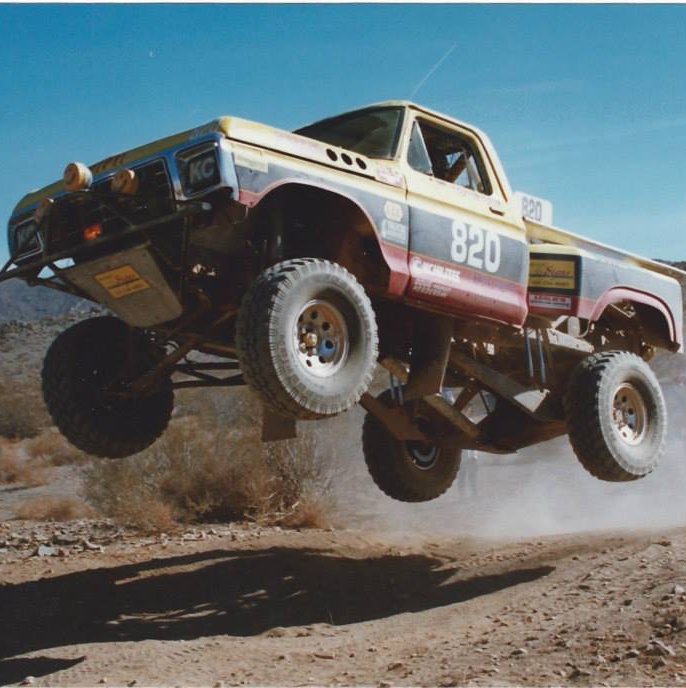
The Dodge truck in its original Class 8 configuration. If you look closely towards the right rear tire, you can see part of the original quarter-elliptic suspension design the truck started with.
 The front end retained the popular Ford twin I-beam suspension that was found on many desert trucks back in the day. The rear of the truck held the real magic: A four-link, quarter elliptical spring suspension setup. My first introduction to this truck in person happened in Barstow back in 2001 at a MORE race.
The truck’s carb was getting tuned the morning of the race. Mike needed to do a test run, so he asked if I wanted to go for a ride. The smooth ride in the three-foot whoops impressed me with the truck’s setup. To attest to the work that Curt LeDuc did, a few years later I met a Class 7 truck that was fabricated by the owner. He used to sit at the learning tree of LeDuc and that truck rode just as good as the big Ford.
The front end retained the popular Ford twin I-beam suspension that was found on many desert trucks back in the day. The rear of the truck held the real magic: A four-link, quarter elliptical spring suspension setup. My first introduction to this truck in person happened in Barstow back in 2001 at a MORE race.
The truck’s carb was getting tuned the morning of the race. Mike needed to do a test run, so he asked if I wanted to go for a ride. The smooth ride in the three-foot whoops impressed me with the truck’s setup. To attest to the work that Curt LeDuc did, a few years later I met a Class 7 truck that was fabricated by the owner. He used to sit at the learning tree of LeDuc and that truck rode just as good as the big Ford.
The Truck Gets Updated
Since those early days, the truck has undergone other changes besides the body. At one point, according to Mike, the truck sat on jack stands for several years. Also, the rear part of the truck was redesigned. The quarter elliptical setup was scrapped for coil springs. Mike stated that one of the benefits of the redesign was the addition of storage space. The old design dictated that the fluids that were stored inside during races could now be stored outside. New shocks were also on order. King shocks now handle controlling the suspension movement through the whoops.
There have been times in the past that the truck would run 35-inch tires. These days, the truck sports 37-inch General Grabber tires mounted on KMC Machete wheels.
Mike stated that one of the benefits of the redesign was the addition of storage space. The old design dictated that the fluids that were stored inside during races could now be stored outside. New shocks were also on order. King shocks now handle controlling the suspension movement through the whoops.
There have been times in the past that the truck would run 35-inch tires. These days, the truck sports 37-inch General Grabber tires mounted on KMC Machete wheels.

Why Change What Works?
One of the things that stood out to me was the interior of the truck. Like most race vehicles, if it’s not needed, it doesn’t ride. The same goes for this race truck. The last few years, I have been hanging out around Ultra4 cars. Most of those cars are fairly new and usually have the latest and greatest tech. Panels in newer race vehicles can be easily mistaken for airliner control panes. Yet, the cockpit of this orange beast is spartan, to say the least.
The dash sports six gauges and there are minimal switches. There is also a radio, a Lowrance GPS unit, and a siren box. Simple, clean, and gets the job done – these words describe the cockpit.
The last few years, I have been hanging out around Ultra4 cars. Most of those cars are fairly new and usually have the latest and greatest tech. Panels in newer race vehicles can be easily mistaken for airliner control panes. Yet, the cockpit of this orange beast is spartan, to say the least.
The dash sports six gauges and there are minimal switches. There is also a radio, a Lowrance GPS unit, and a siren box. Simple, clean, and gets the job done – these words describe the cockpit.
In Closing
 Sponsors play a huge part in race teams and Mike would like to give a shout-out to those companies that support his efforts: General Tire, Battery Pro, KMC Wheels, Optima Batteries, 212 Performance Gloves, Rugged Radios, Parker Pumper, S and S Shirts, KC HiLites, and Idea Printing and Graphics.
If you get a chance to see this truck out in public, take a few minutes and check it out. The history of the truck and the legacy of the Bragg name makes this truck a great piece of off-road racing.
Sponsors play a huge part in race teams and Mike would like to give a shout-out to those companies that support his efforts: General Tire, Battery Pro, KMC Wheels, Optima Batteries, 212 Performance Gloves, Rugged Radios, Parker Pumper, S and S Shirts, KC HiLites, and Idea Printing and Graphics.
If you get a chance to see this truck out in public, take a few minutes and check it out. The history of the truck and the legacy of the Bragg name makes this truck a great piece of off-road racing.


